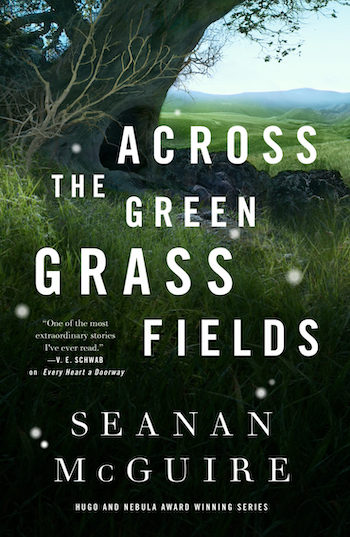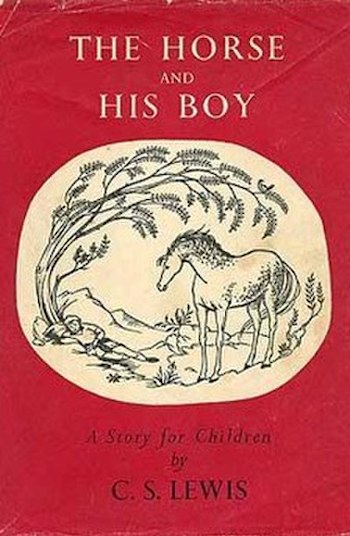We tend to take questions like “Was C.S. Lewis sexist?” and place it in a binary: yes or no. We could do that, certainly, and we would have a simple and rather uninteresting answer, because if we’re going to boil right down to it, yes, for sure, obviously, much of Lewis’ work matches nearly any definition of sexism we’d like to use.
We could also spend a great deal of time putting Lewis’ views of women into the various contexts which he inhabited and investigating why he may have come to the conclusions that he did: the age he lived in, his lack of regular interaction with a diversity of women at various times in his life, the death of his mother when he was a child, the world of elite scholars in the 1940s and ‘50s in Britain, or how shaped he was by medieval and, yes, Christian thought.
We could definitely write a whole article about how adult women and especially mothers don’t often appear in Narnia…in The Horse and His Boy we have Aravis’ stepmother (mentioned only in passing, and at least according to Aravis, someone who hates her and is evil), Shasta and Corin’s mother (dead), Aravis’ mother (dead). But then again, we are in the fairylands, and dead mothers and evil stepmothers are the norm. Susan is an adult, though, and has taken on a motherly friendship with Corin. Lucy, too, is more-or-less an adult in this novel.
What’s more interesting to me at this point in our journey through Lewis’ work is that there seem to be some things in The Horse and His Boy that don’t correspond with a singular, simplistic reading of Lewis’ work or his thoughts and feelings about women. In fact, this book—the one that is often central to arguments about Lewis’ racism—has a woman of color as a main character. It passes the Bechdel test (an admittedly low bar, but also this book came out in 1954). And it’s interesting that The Lion, The Witch and the Wardrobe—which I argued presents women as only matrons, monsters, or children—finds a significant counterpoint in this novel published only a few years later (with the first draft written a great deal earlier).
Which is to say, Lewis, like most human beings, had thoughts and ideas about things that shifted over time. We’ll see more of this when we go backward to the Space Trilogy, and eventually when we get to Till We Have Faces…his marriage and relationship with Joy Davidman in particular changed the ways he talked about women.
Now, it’s true that in this book Lewis is playing with opposites and mirrors and doubles. So it’s interesting and perhaps to be expected that Shasta the fisherman’s son and Bree the war horse are joined on their journey by Aravis the Tarkheena and Hwin, a horse that can pass for a common pack horse in a pinch.
Aravis is the opposite of Shasta in nearly every way. She is female, he is male. Every step Shasta takes toward Narnia is, unbeknownst to him, a step toward becoming royalty. Aravis knows that when she arrives in Narnia she’ll be a commoner with no claim to any throne. He’s a fisherman’s son, she’s a princess. He can’t ride a horse, she rides with ease. He’s got no experience in the world beyond his little village, and Aravis has to disguise herself because she’s so well-known throughout the country. What they have in common is not insignificant, though: both have lost their mothers, and both are running North…one to escape slavery and one to escape a forced marriage.
Lewis makes it clear multiple times, by the way, that a woman should have freedom to marry whomever she wishes—a position not to take for granted even today—and certainly that children shouldn’t be marrying adults. In fact, it is Hwin’s promise to Aravis that Narnia is a place where “no maiden is forced to marry against her will” that keeps Aravis from killing herself. For in Narnia, “you would be happy.”
Aravis is presented throughout the book as a person to be admired. She is intelligent, well-read, educated, clever, she’s interested in “bows and arrows and horses and dogs and swimming,” loyal, quick to forgive and quick to apologize, great at telling stories, a natural survivor, excellent with horses, and when in danger she “never loses her head even for a moment.” On top of all that, when she meets Lucy they love each other at once, and a character loving Lucy is always Lewis’ shorthand to say, “This is a really wonderful person with a good heart.”
Lewis doesn’t allow many flaws in Aravis. In fact, when Shasta thinks that perhaps she has abandoned him, Lewis-as-narrator goes out of his way to say, “She was proud and could be hard enough but she was as true as steel and would never have deserted a companion, whether she liked him or not.”
Even when she makes mistakes, we see that she takes responsibility for them immediately. When she oversleeps in the desert (along with all her companions) she blames herself, not them:
“It’s my fault,” she said to herself furiously as she jumped up and began rousing the others. “One wouldn’t expect Horses to keep awake after a day’s work like that, even if they can talk. And of course that Boy wouldn’t; he’s had no decent training. But I ought to have known better.”
She also isn’t easily swayed by money or power. Lasaraleen tries to convince her that life in an arranged marriage wouldn’t be so bad. There would be three palaces, and lots of money and influence. That means very little to Aravis: “He can keep his pearls and palaces as far as I’m concerned.” (No doubt this takes on greater significance when we remember that for Lewis this book is dealing with a theme related to people coming into relationship with God. We’re hitting on the classic Christian idea that one must be willing to leave behind money and influence to seek God. Aravis is willing—in fact eager—to set aside wealth and power because she understands that to achieve them requires a sort of slavery. She wants something better, in Narnia, in the North.) Sidenote: Lasaraleen is married (!). She’s focused a great deal on things like fashion and parties, but overall she’s presented as a sympathetic, kind soul who is loyal to her friend. Perhaps Lewis would say, “Silly but good.” Lasaraleen is an interesting character to keep in mind when we eventually discuss Susan in The Last Battle.
Aravis immediately wants to apologize to Shasta after their encounter with Aslan. Shasta tries to stop the lion, when the rest of them ran. Aravis tells Bree, “I’ve been snubbing him and looking down on him ever since you met us and now he turns out to be the best of us all.” When she does eventually apologize, she takes great pains to make it clear: this is not because Shasta is a prince, now. She is apologizing to the fisherman’s boy, Shasta, not to Prince Cor.
Buy the Book


Across the Green Grass Fields
There is, as is always the case with the main characters in Narnia, at least one major flaw incorporated so that Aslan can talk to them about it in the latter half of the book. In this case, that’s the fact that Aravis drugged one of her slave girls when she escaped, and is unconcerned about the girl’s fate. When Shasta asks what happened to the girl, Aravis says, “Doubtless she was beaten for sleeping late. But she was a tool and spy of my stepmother’s. I am very glad they should beat her.”
This is why, Aslan tells her, he clawed her back. The scratches match those given to the servant girl as her punishment, “tear for tear, throb for throb, blood for blood.” He explains to Aravis that she “needed to know what it felt like.” To her credit, she then immediately asks Aslan what happened to the girl. But of course Aslan never tells us someone else’s story….
One of my favorite Aravis moments comes toward the end, when King Lune encounters her for the first time. Lune is delighted to meet her and says that he has heard all about their adventures and “all her valour” and she immediately says, “It was he who did all that, Sir. Why, he rushed at a lion to save me.” King Lune is delighted, because Shasta left that part of the story out. There’s something sweet about how this young princess turns the attention away from herself and toward her friend when meeting the king, Shasta’s father, for the first time.
It is in the final paragraphs of the book that we see Aravis’ future:
Aravis also had many quarrels (and, I’m afraid even fights) with Cor, but they always made it up again: so that years later, when they were grown up, they were so used to quarrelling and making it up again that they got married so as to go on doing it more conveniently. And after King Lune’s death they made a good King and Queen of Archenland and Ram the Great, the most famous of all the kings of Archenland, was their son.
So Aravis enters into a marriage of equals. She and her husband have quarrels (and even fights!), which is to say that there’s no meek acceptance of the will of her lord, the king, but rather a marriage in which disagreements were hammered out in relationship. So all of the things she left behind…wealth and power and title…she gains again in Archenland, but with a husband she has chosen and come to love. And their son—the child of a man who was Calormene by culture and a woman who had been a Tarkheena—becomes the most famous king of Archenland. She is also, by the way, a sort of mirror to Rabadash, who also had been raised among the Calormene, but chose to hold on to wealth, power, and his pride, unlike Aravis.
I wonder how the book would have changed if Lewis had written The Horse and Her Girl. Aravis does get her own chapters in this book, but I’m curious how things might have been different if the whole adventure had been seen through her eyes. Aravis clearly has Lewis’ respect, and she’s a young woman who is presented as someone to admire. She too—mild spoilers—is seen in the “heavenly kingdom” to come in The Last Battle, so although she never steps into Narnia in this novel, at some point she must make her allegiance to Aslan known.
And so we come to the end of our last post about The Horse and His Boy. We’ve not come anywhere near to exhausting all the topics we could have explored in the book, so feel free to discuss in the comments, and join us in two weeks as we start into the penultimate Narnia book, The Magician’s Nephew!
 Matt Mikalatos is the author of the YA fantasy The Crescent Stone. You can follow him on Twitter or connect on Facebook.
Matt Mikalatos is the author of the YA fantasy The Crescent Stone. You can follow him on Twitter or connect on Facebook.










